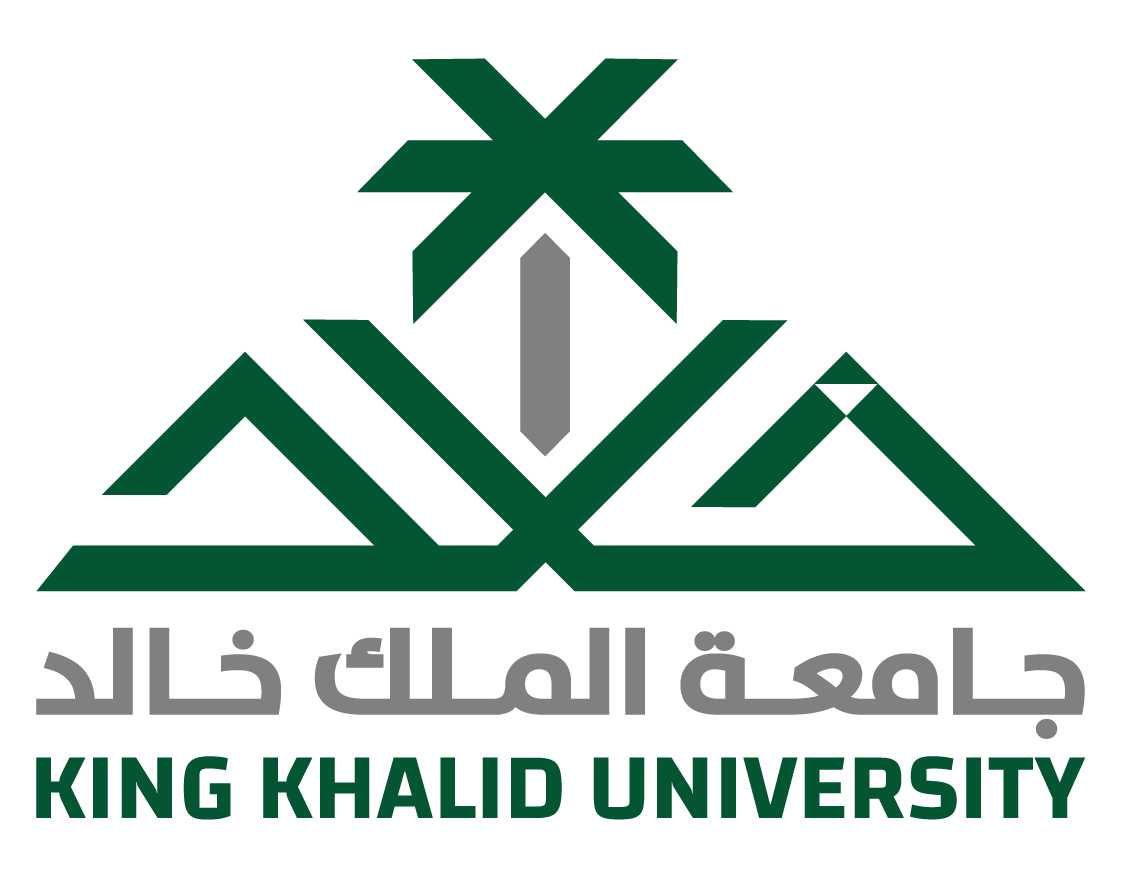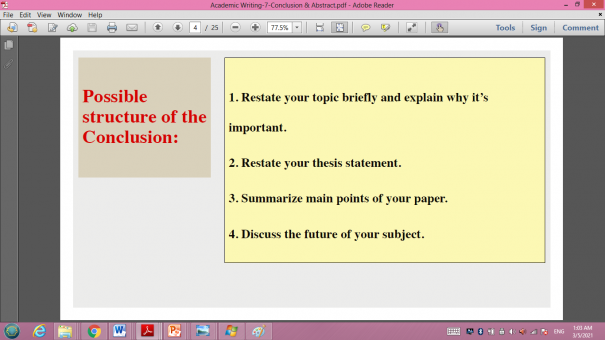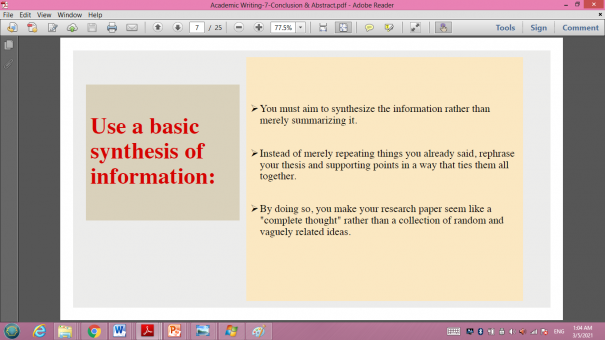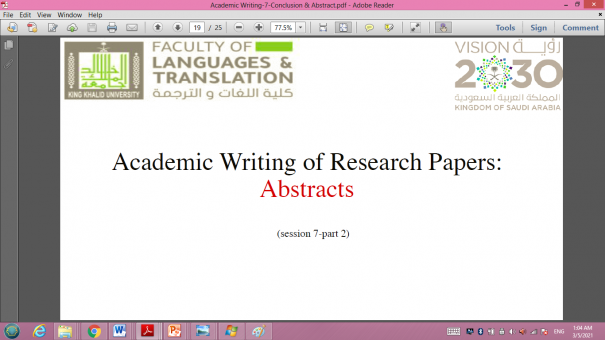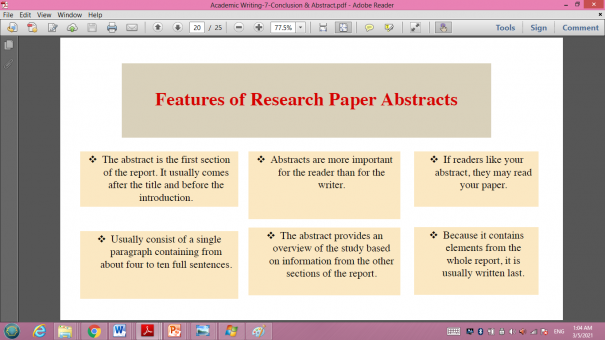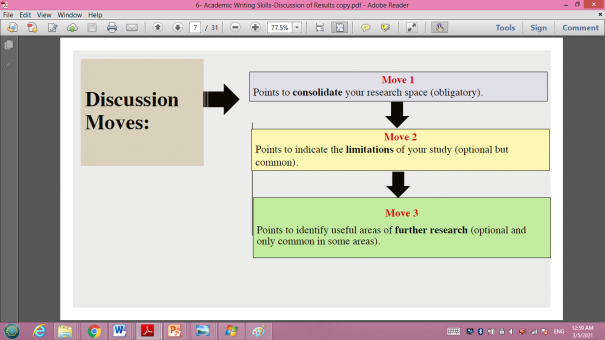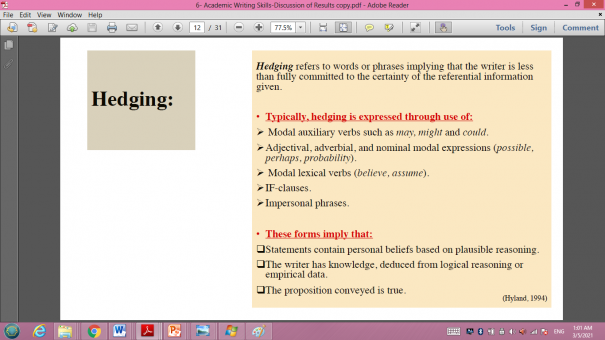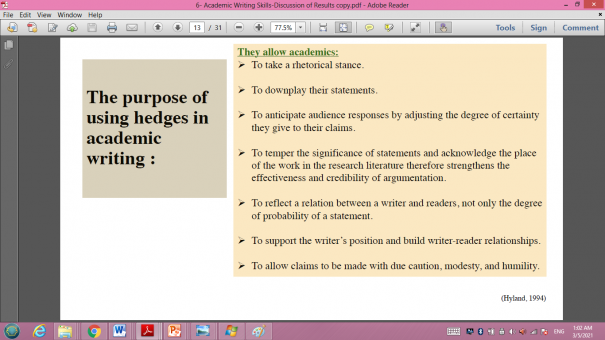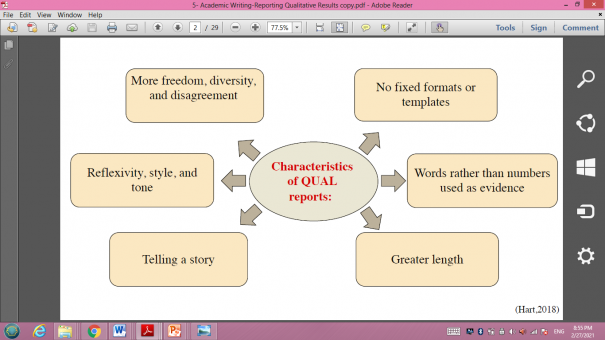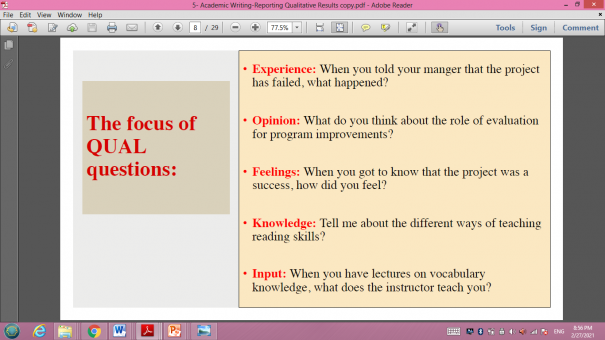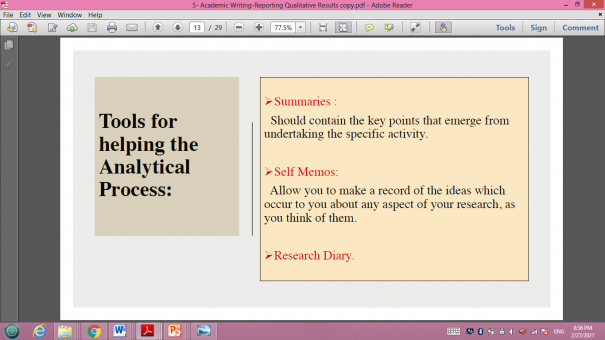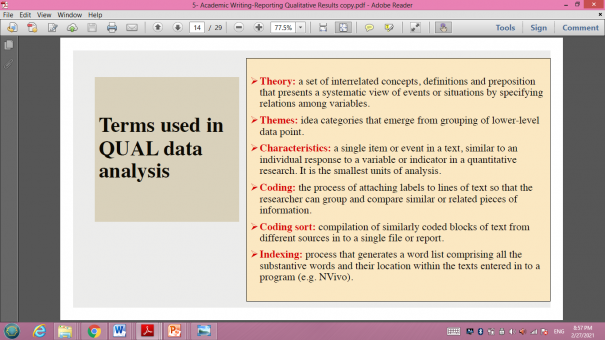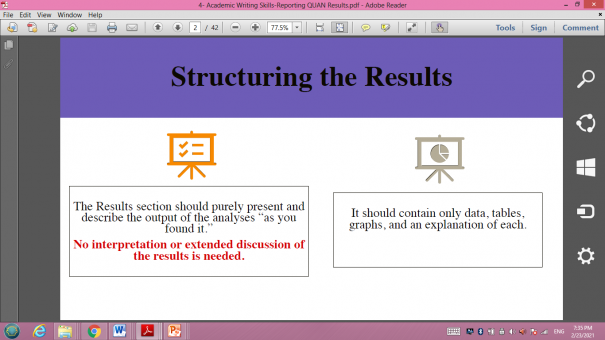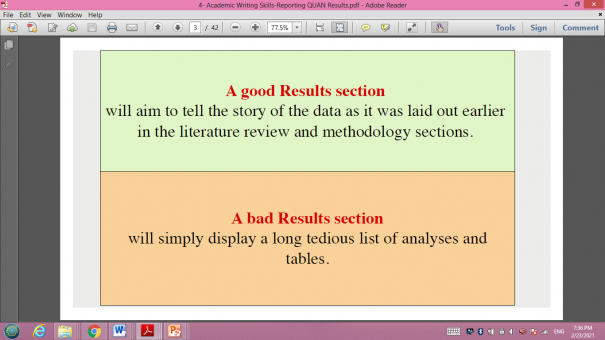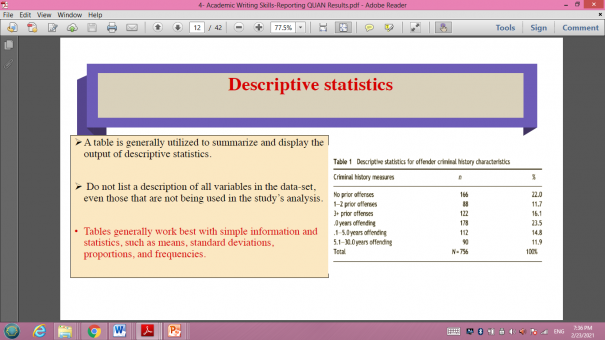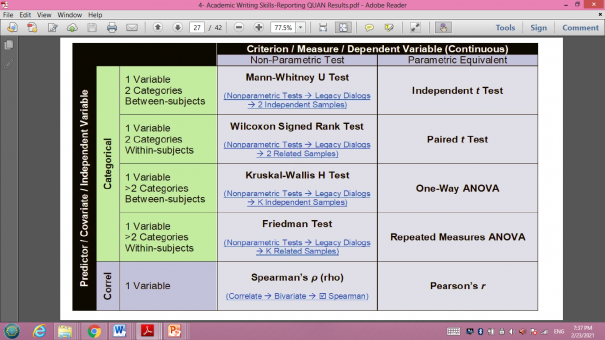How to Prepare an Oral Research Presentation
On October 12, 2021, the Scientific Research Unit - Women’s section- organized a webinar titled How to Prepare an Oral Research Presentation by Dr. Nada Alqarni.
Dr. Alqarni started her presentation by guiding her audience to think about their target. “Think about what you want to achieve and think about how you are going to involve your audience in the presentation”, said Dr. Alqarni. She then illustrated the significance of brainstorming the main ideas, organizing the topics of discussion, getting ready for the presentation and rehearsal.
Dr. Alqarni indicated that it is important to capture the listener’s attention in the beginning. Then the presenter should state the purpose of the topic of discussion and present an outline of his/her work. Dr. Alqarni highlighted the importance of presenting the main points one by one in a logical order and making it clear when moving to another point. She indicated that using clear examples to illustrate the key findings is helpful to keep the audience involved in the discussion. In addition, she referred to the use of visual aids to make the presentation more interesting.
The webinar focused on five main points. These are: preparing an oral presentation, organizing the content, typical presentation format for research projects, delivering a presentation, and a summary of all the main ideas of discussion. In the end, Dr. Alqarni presented a video where an oral research presentation is delivered, and she explained its points of strengths and weaknesses. The presentation was followed by a discussion on presenting research projects that were nicely and neatly wrapped.
The webinar, which was mainly delivered to MA and Ph.D. students and attended by staff members from different faculties at the university, was really informative.
Date: 10/18/2021
Source: Dr. Amal Metwally - Head of Scientific Research Committee
